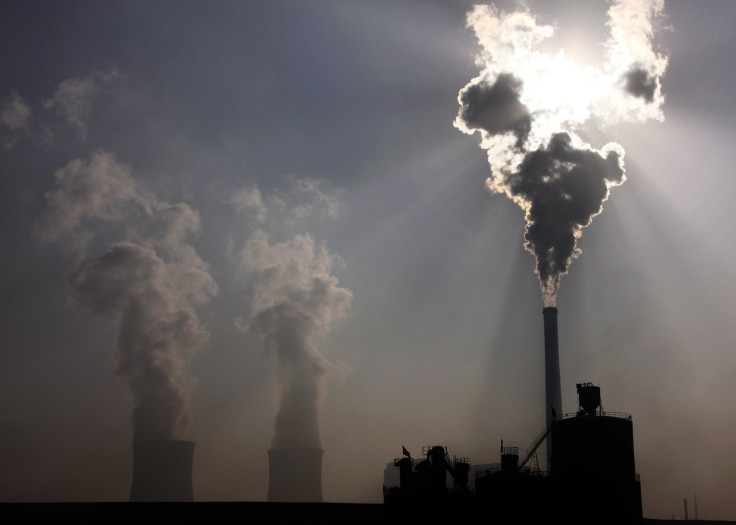Asian Markets Tumble As China's Manufacturing Output Falls To Lowest Level In Three Years

SHANGHAI — Latest official figures on China’s manufacturing output have confirmed the continuing slowdown in the nation’s economic growth, prompting further falls on Asian stock markets on Tuesday morning. Chinese government figures showed that the official Purchasing Manager’s Index (PMI) fell to 49.7 in August, compared to 50 in July -- its lowest level since August 2012. (A figure below fifty on the index indicates that demand is contracting.)
New orders also fell, to 49.7 from 49.9, while export orders also fell, to 47.7, according to figures from China’s National Bureau of Statistics. The figures come against a backdrop of falling export orders – down 8.3 percent in July – which contributed to the Chinese government’s decision to devalue its currency in August, causing global anxiety about the state of China’s economy.
Zhang Liqun, an economist at the Development Research Centre of China's cabinet, the State Council, said the PMI fall reflected “sustained downward pressures” on China’s economy. He said the fall in new orders and export orders showed “shrinking demand,” while the factory output figures showed that “firms' confidence has been eroded,” with companies reducing the size of their inventories, the South China Morning Post reported.
The Independent Caixin/Markit China Manufacturing PMI index (formerly, the HSBC PMI Index), meanwhile, as usual came in significantly lower, at 47.3, its lowest level since March 2009 – though slightly higher than the 'flash' estimate two weeks ago of 47.1, which contributed to last week’s falls on China’s stock market. The index measures the performance of a number of private sector, and small and medium enterprises, and the fall indicated “continued weak demand in the markets for goods and factors of production," according to Caixin’s Chief Economist He Xin.
China’s stock markets, which fell on Monday after rising late last week, were down again on the news. The main Shanghai Composite Index fell more than 4 percent in early trading, before recovering to close just over 1.2 percent lower, at 3,166. The secondary Shenzhen Composite Index, however, fell sharply, losing 4.6 percent, while the volatile ChiNext Index for high-tech stocks was down 5.4 percent.
Hong Kong's Hang Seng Index also fell, by 2.2 percent, while Singapore’s Straits Times Index was down 1.3 percent. Anxiety about China’s economy, along with concern about a possible U.S. interest rate rise, also affected sentiment in Tokyo, where the Nikkei fell more than 3.8 percent. South Korea’s KOSPI Index also closed lower, losing 1.4 percent, while in Australia the ASX 200 fell by some 2.2 percent.
Significantly, China’s PMI data suggested that “both domestic and external demand remains weak,” Li-Gang Liu, chief economist for Greater China at ANZ Bank, said in a note sent to International Business Times. Domestic consumption is seen by China’s government as a key driver of economic growth, amid the slowdown in global demand for the country’s manufactured goods.
Growth in China’s service sector, which has provided the main bright spot for the country’s economy this year, also appears to be slowing, with non-manufacturing PMI falling to 53.4, from 53.9 in July, according to official figures, while new orders for the sector were down to 49.6 from 50.1.
The recent falls in China’s stock market, which boomed in the first half of the year, may be one reason for the slowdown in service sector growth, according to a new report by investment bank Goldman Sachs, which said that financial services made up 0.5 percentage points of the 7 percent GDP growth posted in each of this year’s first two quarters.
Based on China’s “very weak growth” for the first half of this year, Goldman Sachs has lowered its estimate of the country’s GDP growth next year from 6.7 percent to 6.4 percent, though it is sticking to its prediction of 6.8 percent for 2015 as a whole. China had set a target of “about 7 percent” for the year as a whole, though officials have acknowledged that reaching this figure could be a tough task.
ANZ's Liu, meanwhile, said the bank was revising its estimate of China's third quarter growth down to 6.4 percent following the PMI results -- noting that industrial production grew only 6.3 percent from January-July, compared to 8.3 percent in the same period the previous year. However, he said GDP growth could rebound to 6.8 percent in the final quarter of the year, as a result of government's easing measures.
Recent government moves to cut interest rates and allow banks to lend a high proportion of their assets to businesses would give the economy a short-term boost, Liu said. However, he said China would need further rate cuts to boost lending, while authorities should also make it easier for businesses to issue corporate bonds, since bond market interest rates remain lower than real bank lending rates.
China’s Premier Li Keqiang has said that China’s economy is growing within an “appropriate" range. But he has acknowledged that China needs “industrial restructuring” to enhance creativity. The government is also seeking to boost other sectors of the economy, including the property market. On Tuesday, it announced it was reducing the minimum down payment for citizens using state housing funds to buy second homes from 30 percent to 20 percent. State media said this would encourage more purchases of second homes, as the government seeks to ensure that this year's rebound in the real estate sector does not slow down.
© Copyright IBTimes 2024. All rights reserved.












